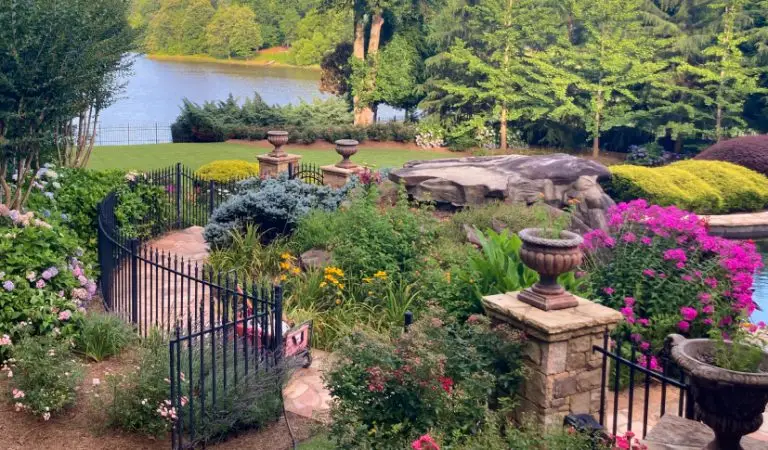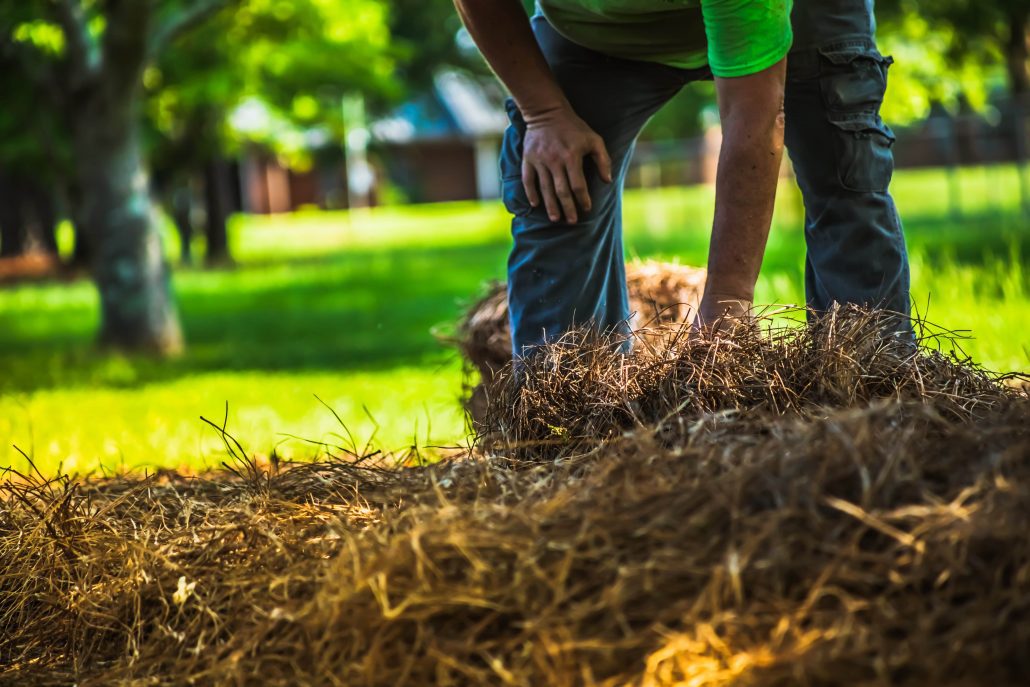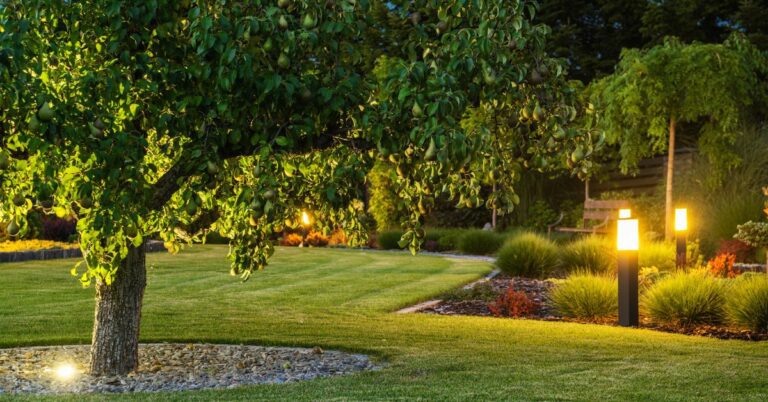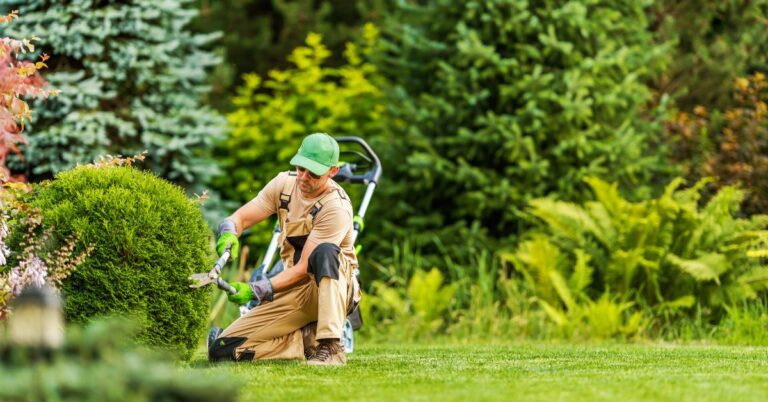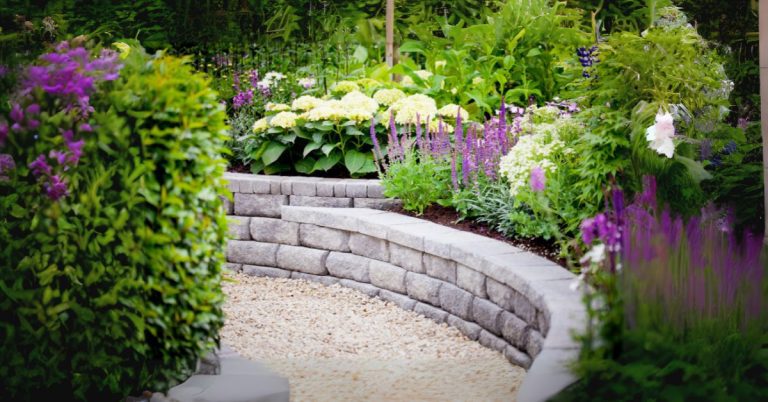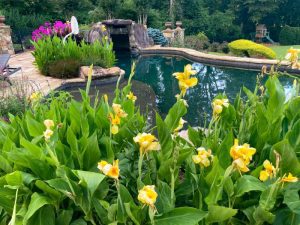In general, mulch is one of the best ways to protect soil, moderate ground temperature, and suppress weeds. In areas of your yard needing extra attention, mulch makes the area more appealing to the eye by creating a uniform look. While there are considerable options for mulching, pine straw mulch is unrivaled for its beneficial qualities to your landscape.
For years, pine straw continues to be a popular choice for homeowners in the South. Known for being inexpensive, easily accessible, and effective, pine needles are one of the best alternatives for regular mulch.
Whether you’re new to gardening or considering purchasing pine straw mulch for your yard, this guide will explore all you need to know.
The Benefits of Pine Straw Mulch
Every year, pine trees shed hundreds of once-green needles on the ground to create room for new growth. The straw is then gathered and goes through a process to be cleaned. This process does not add any extra chemicals or treatments, making the straw purely organic.
Typically, the pine needles are raked and placed in a machine to be baled and tied.
Compared to other types of mulch, pine straw has a significantly lower carbon footprint than shredded bark. Gathering pine straw contributes to forest cleanliness and management while helping to reduce the risk of wildfires. The simplicity of its production process makes pine straw an eco-friendly choice for gardeners.
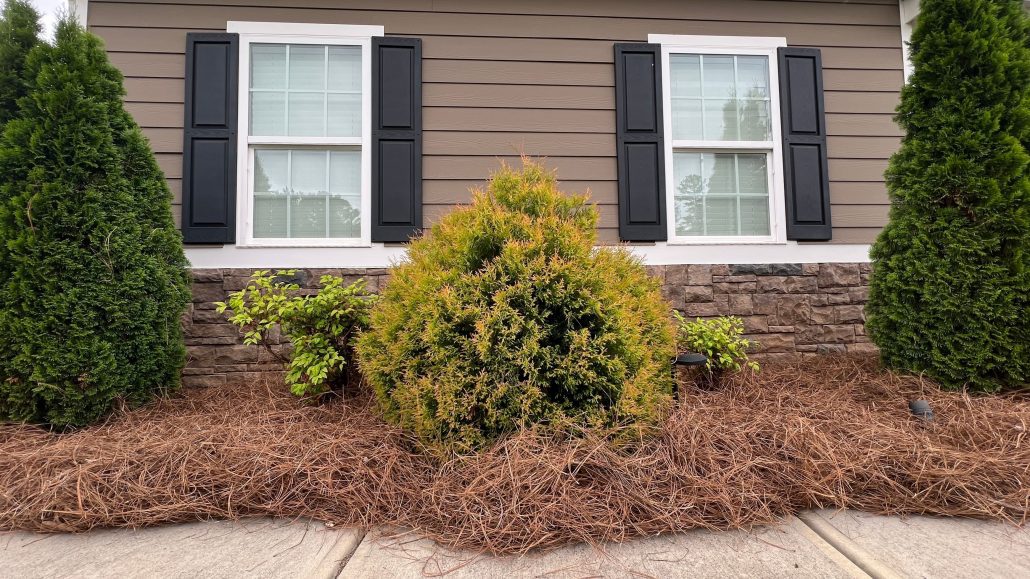
The Advantages of Pine Straw Mulch
Attractiveness
Pine straw has a unique reddish-brown hue once it falls from the pine tree. This popular ground cover can be used in various ways to enhance texture, contrast, and unity within your landscape. Especially when placed in garden beds, pine straw mulch isolates plants, drawing closer attention to the area. After rain showers, the color of the mulch deepens and emits a beautiful pine aroma surrounding the area.
Lightweight with Easy Application
Much of the work that goes into landscaping is all due to labor. So obviously, the heavier the materials the harder the job. Using lightweight materials makes it easier to spread across an area, especially for larger yards.
Compared to its counterparts, even baled pine straw is significantly less heavy. A single bale of pine straw weighs about 35 lbs. As opposed to standard gravel ground covering with a weight of 50 lbs. Or greater.
Soil Protection and Minimize Erosion
Soil health is one of the most important factors when it comes to the maintenance of your plants. When the soil is healthy so are the root systems of the plants. Pine straw mulch is a multifunctional material that creates optimal growth conditions for plant roots by regulating soil temperature and moisture—especially in cool and hot seasons. As the needles begin to decompose, they release nitrogen acting as a form of fertilizer for roots growing beneath.
For sloped terrain, pine straw does an excellent job and minimizing erosion caused by harsh weather conditions. The material regulates water to flow through the soil beneath. This explains why pine straw contributes to the conservation of soil moisture. Even in windier areas, the pine straw will not blow away, even for uneven or sloping land.
Sustainability Efforts
From the gathering process to usage, pine straw is classified as an organic material because it does not undergo any treatment to maintain its health and longevity. Through a composting-like process, pine straw recycles nutrients back into the environment as it decomposes over time.
On the same note, the process to acquire and harvest pine straw does not negatively impact the environment such as cutting down trees. As previously mentioned, the carbon footprint is lower compared to producing wood mulch. The natural accessibility and sustainability of pine straw is why it is the number one mulching material in the Southeast.
Are There Any Disadvantages?
Difficult to Remove
Depending on location, pine straw can last up to 6 months to an entire year. Many landscapers tend to reapply and keep the remaining straw. Removing pine straw mulch from your landscape is a difficult task and not typically recommended.
Over time, the pine needles break down and dissipate into organic matter. This process is not quick, but if you are looking to get rid of it, it will have to go through its natural course.
Doesn’t Block Weeds Too Well
It’s debatable whether or not pine straw mulch completely stops weeds from sprouting. Generally, pine straw can prevent weeds, but may not completely stop them from germinating. For example, pine straw is lighter than wood mulch.
Wood mulch tends to create an impenetrable barrier on top of a plant bed ultimately halting the weed germination process. So, while pine straw mulch is a preventative measure, it is not completely foolproof for weeds.
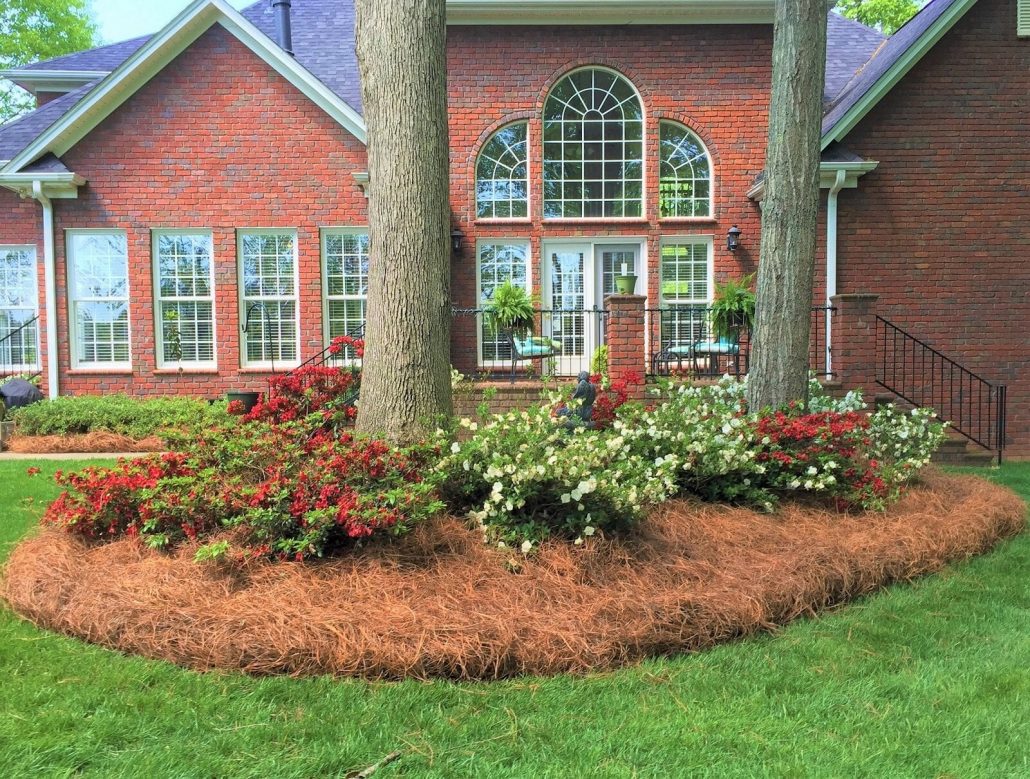
How to Use Pine Straw Mulch
Grab a pair of utility gloves to protect your hands from the sharp needles of the straw. To apply, simply bring the bale nearest to the area, cut the tie, and spread handfuls of the straw around evenly across the soil.
For best results, shake even layers of pine straw aiming for a depth of 3 inches. Access the area for holes and uneven application. We recommend using long-leaf pine straw. The needles range between 12-14 inches long and tend to last longer than short-leaf straw.
This also means you can move it around without hassle, which is great for when you’re planting new things each season. The best kind of this mulch, made from longleaf pines, lasts up to a year before you have to think about replacing it.
Conclusion
Pine straw mulch in landscaping offers an array of benefits that align with sustainability, aesthetic appeal, and overall plant health.
Especially in Georgia, the humid conditions and high summer temperatures can make plant maintenance difficult. So, choosing a ground covering that best fits the needs of your landscape is the most important. Easy accessibility and abundance make pine straw mulch a go-to and inexpensive way to preserve the life of your plants and trees.
At Creech Landscapes, we pride ourselves on maintaining your yard with the best practices and service. Our Pine Straw Installation service page offers key information about our installation process and other FAQs. With the spring season approaching, consider adding pine straw to your landscape!

